Jewish Museum Berlin
Architecture of emotions
The Jewish Museum in Berlin is Europe’s largest Jewish museum. The building by architect Daniel Libeskind is one of the city’s iconic landmarks. Its floor plan describes the fractures, distortions and abysses in the history of Judaism and the Holocaust. Our task was to make these tangible in tactile maps.
A broken Star of David that has become a museum is both a symbol and a room for experience. This space, with all its shafts, crooked walls and unclear paths, leads visitors onto shaky ground. The new tactile maps provide orientation.
To guide guests from all over the world through the multi-storey building with its redesigned permanent exhibition, we first identified important orientation spots in the museum. Together with the Jewish Museum and a focus group, the concept was tested for its practical usefulness before we “inkl. Designers” created the guidance plans.
Today, they fit seamlessly into the design of the rooms and at the same time make the theme of inclusion visible in an aesthetically sophisticated way. The tactile maps provide information in German and English. Their lettering was done in Braille and profile lettering as well as with a high contrast value that is easy to read.
In addition to the floor plans, we designed two tactile paintings for the Jewish Museum. One shows a portrait of Albertine Heine, which was created on the occasion of her marriage to Paul Mendelssohn-Bartholdy. The grandson of the famous philosopher Moses Mendelsohn was secretly engaged to Albertine for a long time; his father rejected the union.
The high-resolution print of the lush motif is covered with transparent acrylic, raised lines make the visible schematically tangible.
The second tactile painting shows a depiction by the artist Jankel Adler on the theme of the Sabbath. The scene shows domestic rest on the weekly holiday.
Tactile Painting Albertine Heine as bride
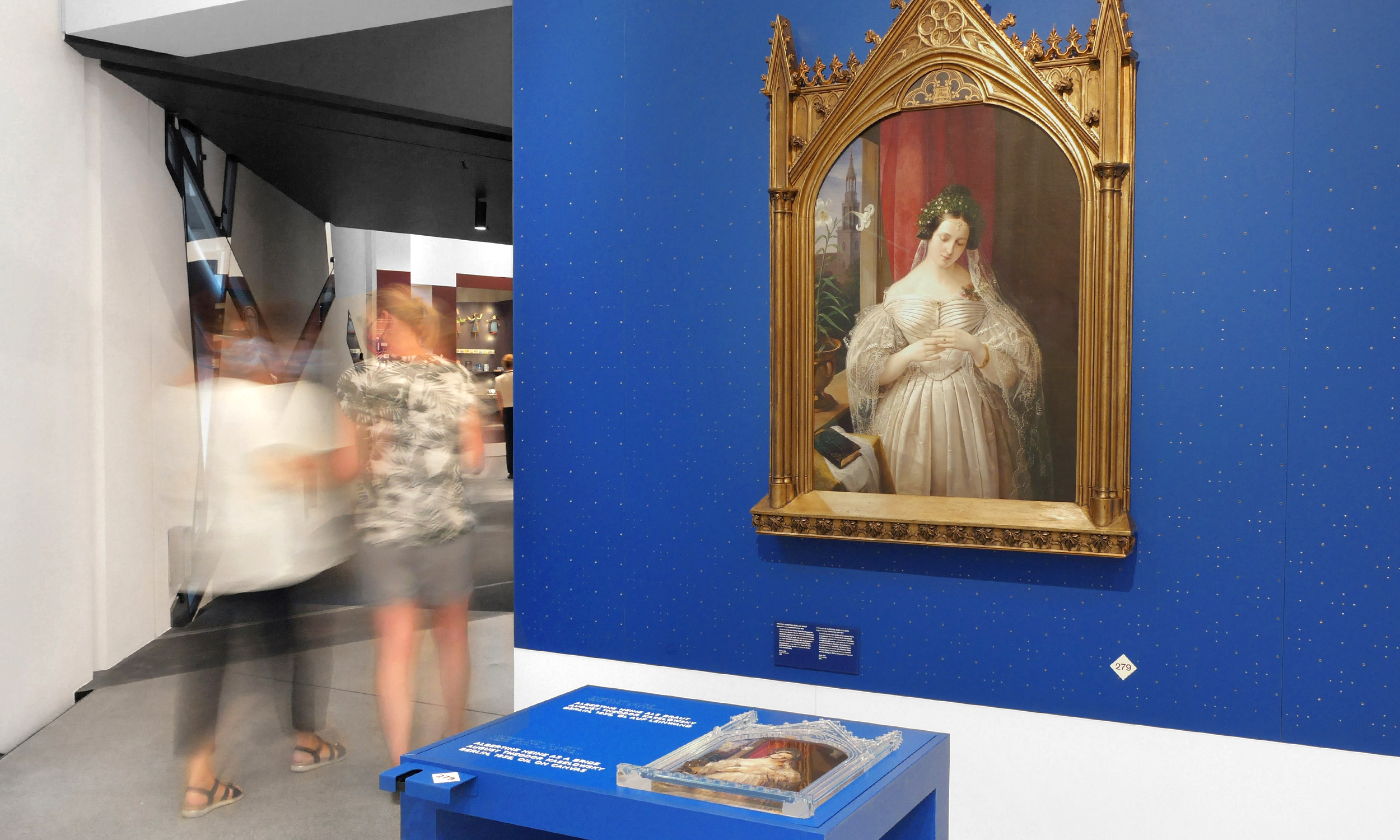
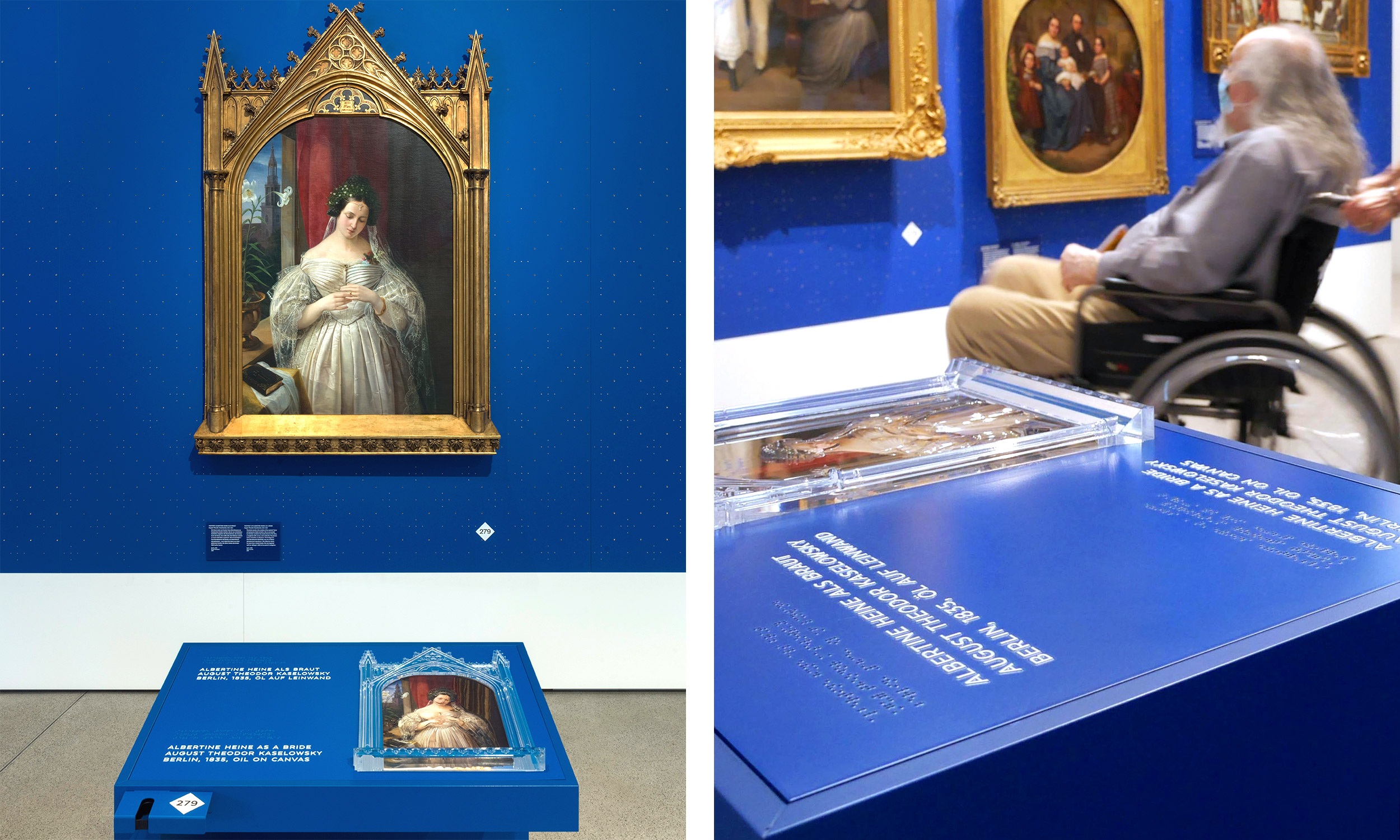
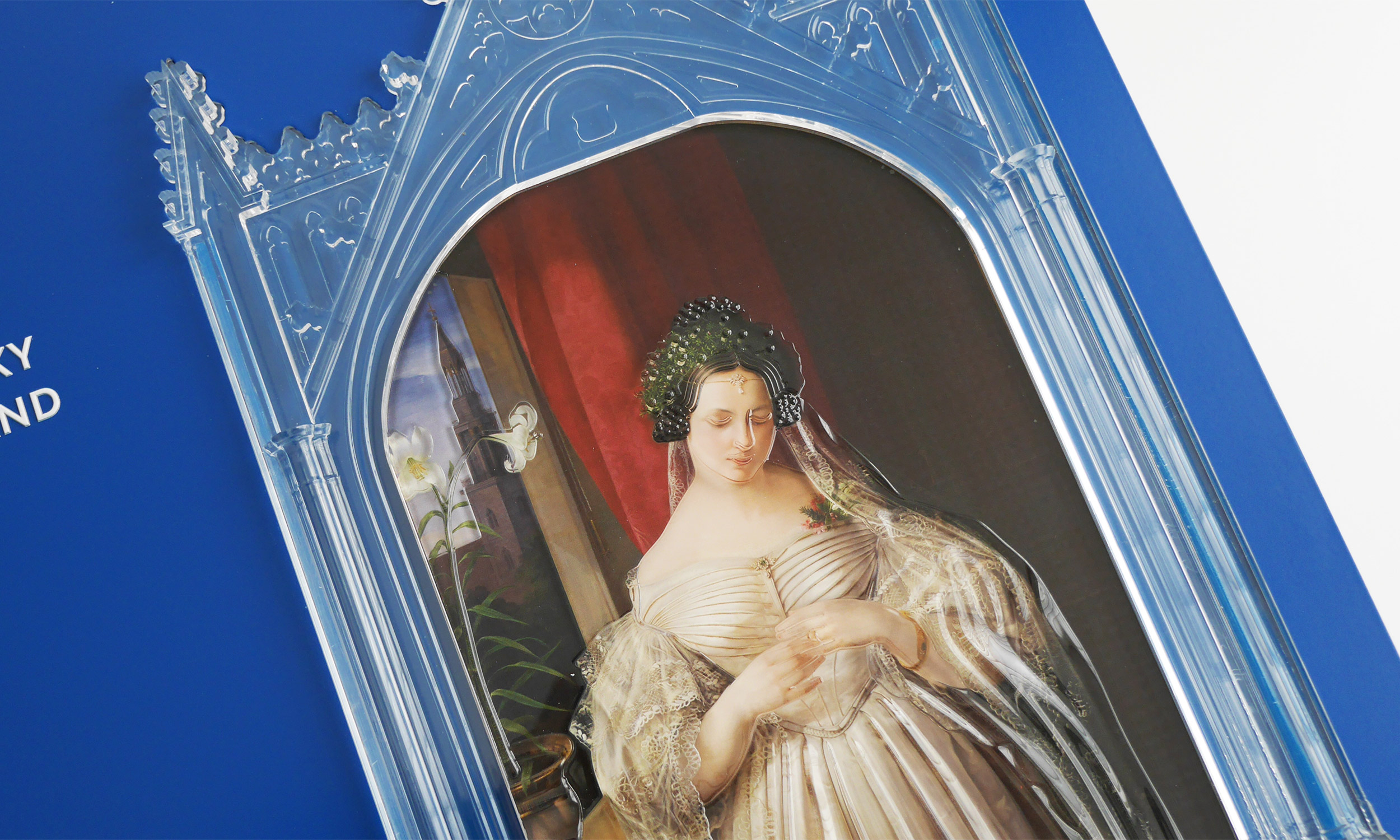
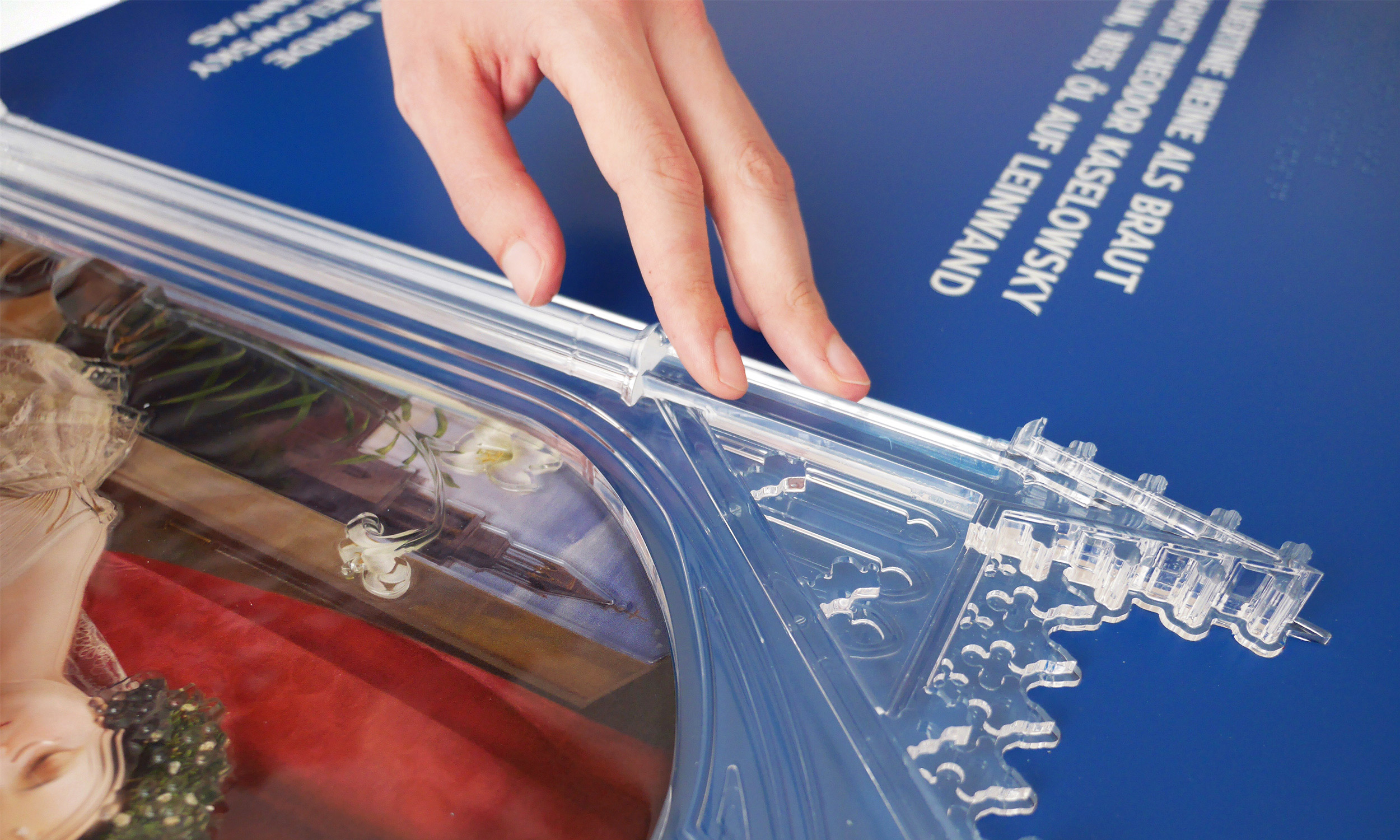
Tactile Painting Sabbath
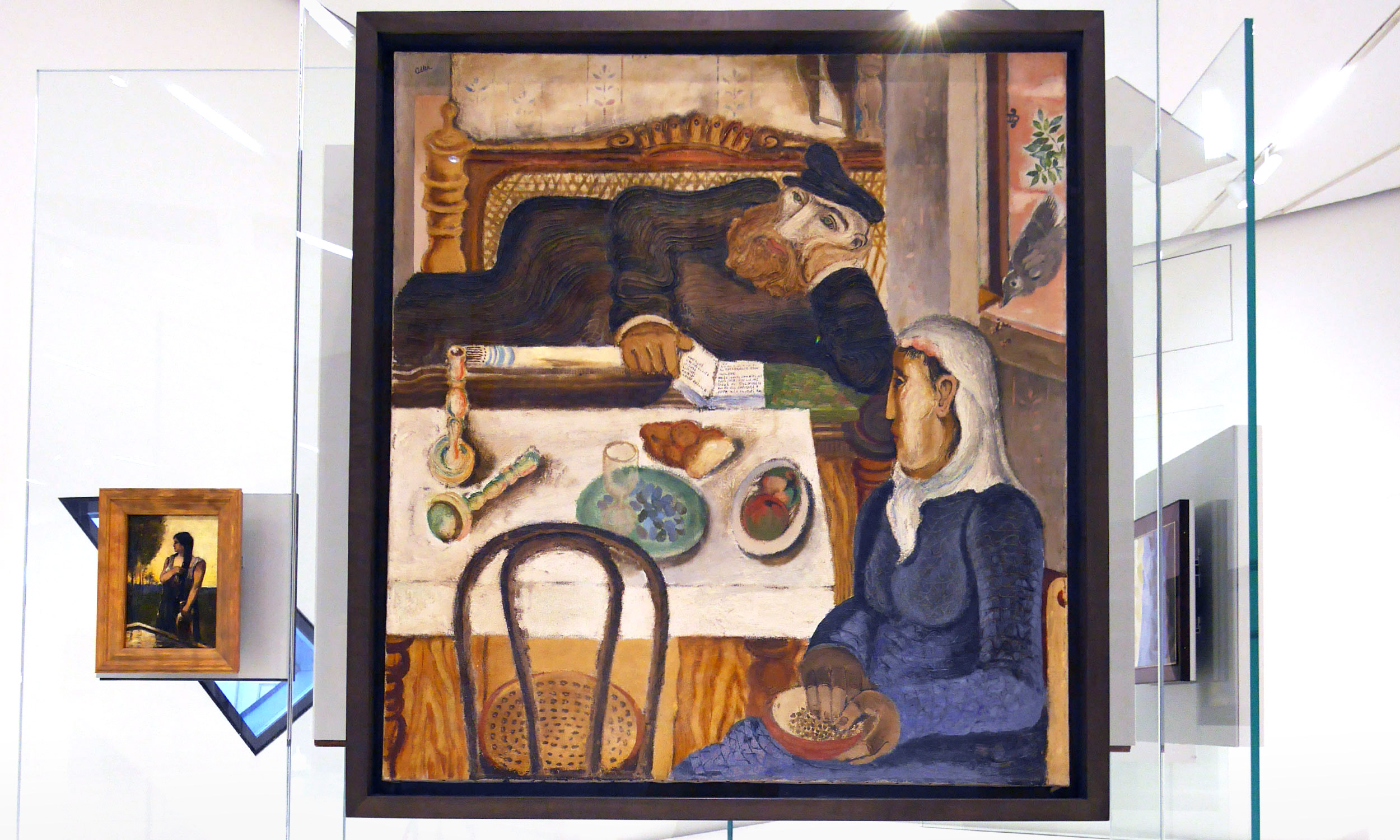
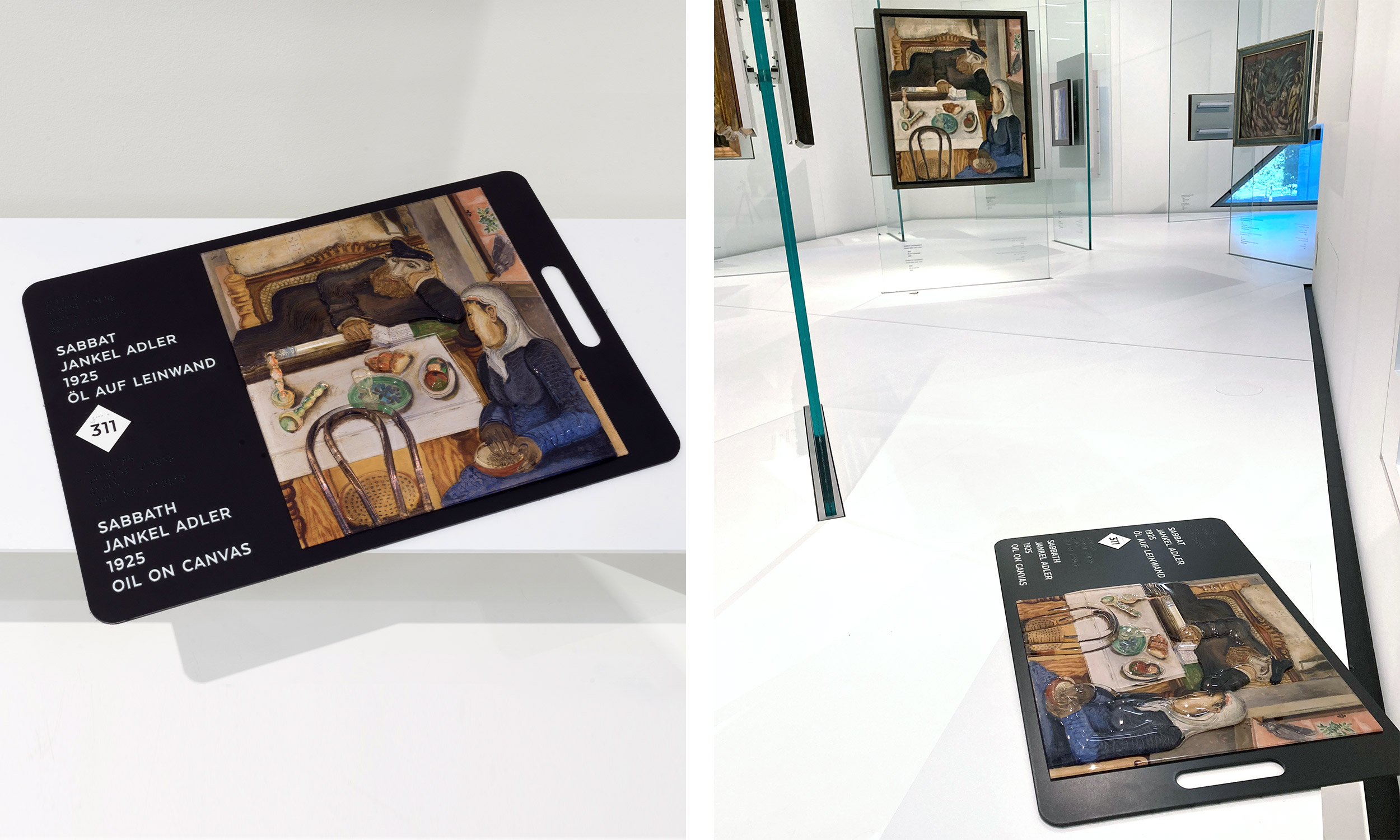
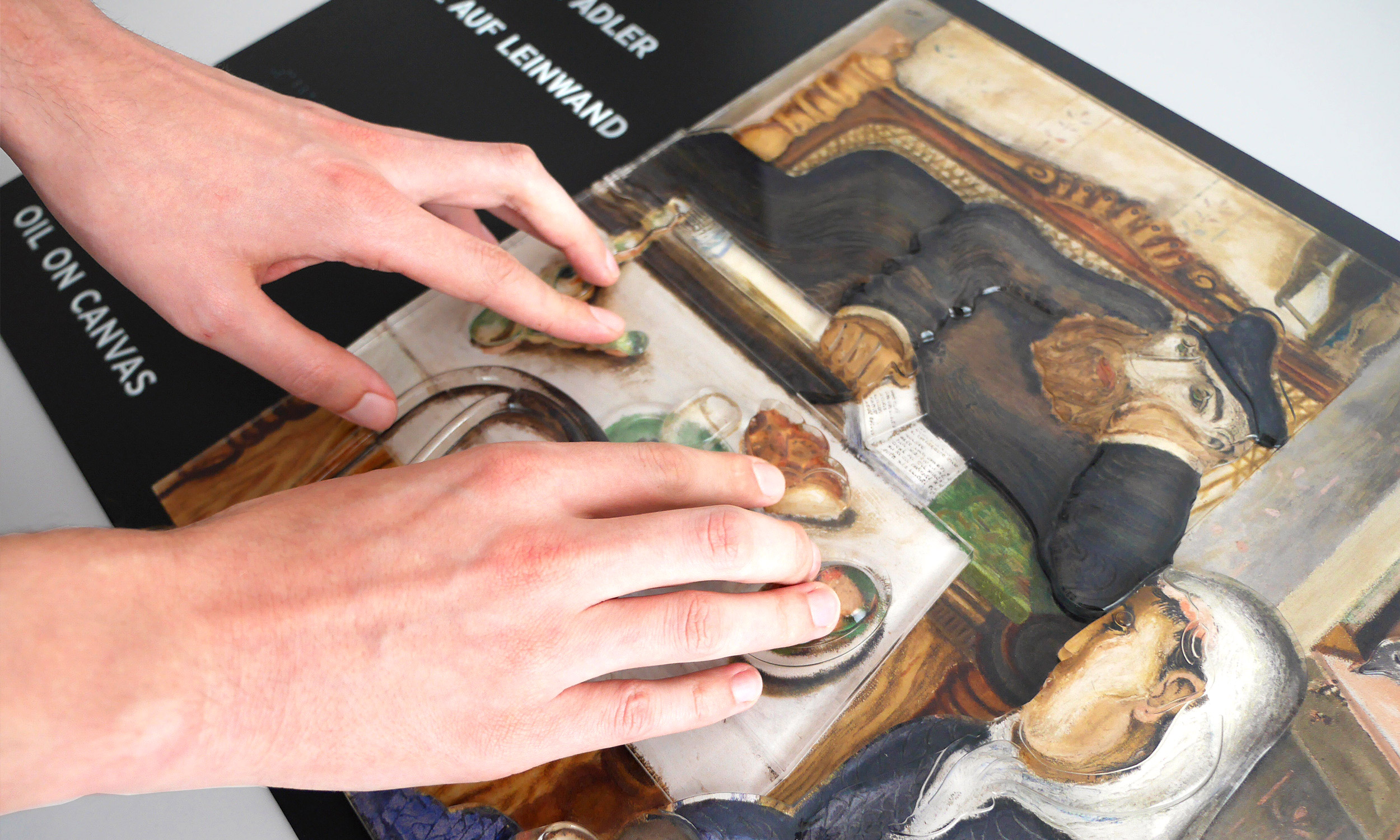
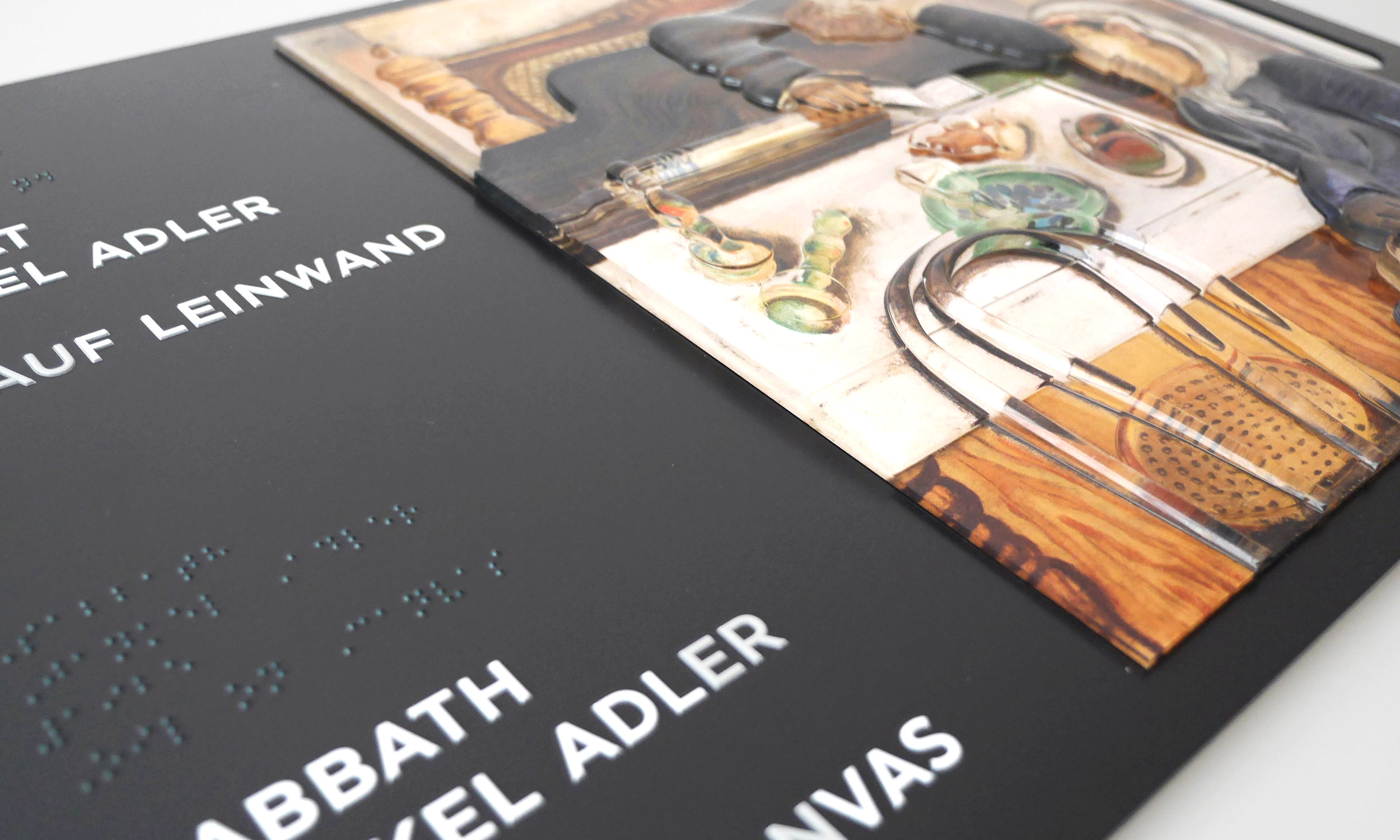
Tactile Maps
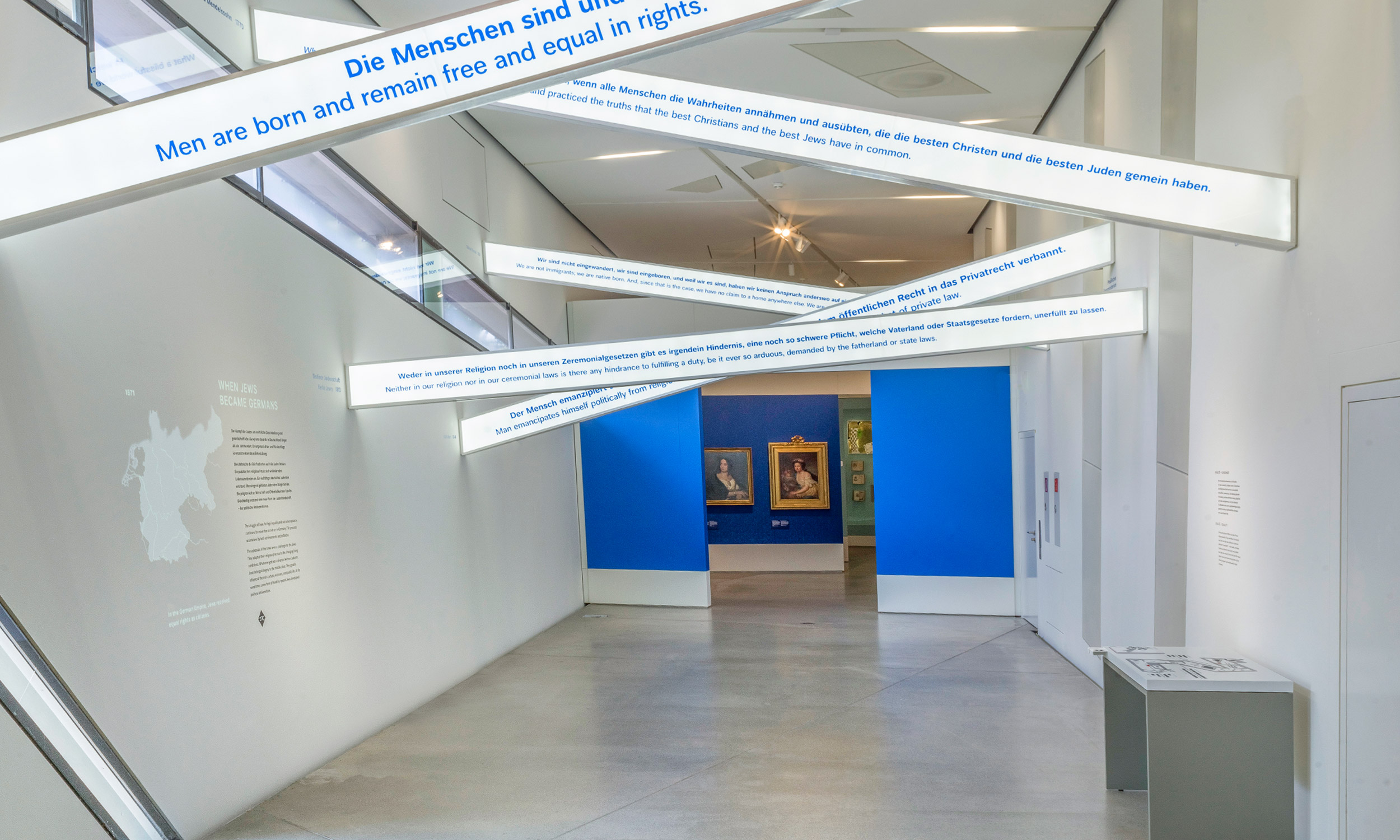
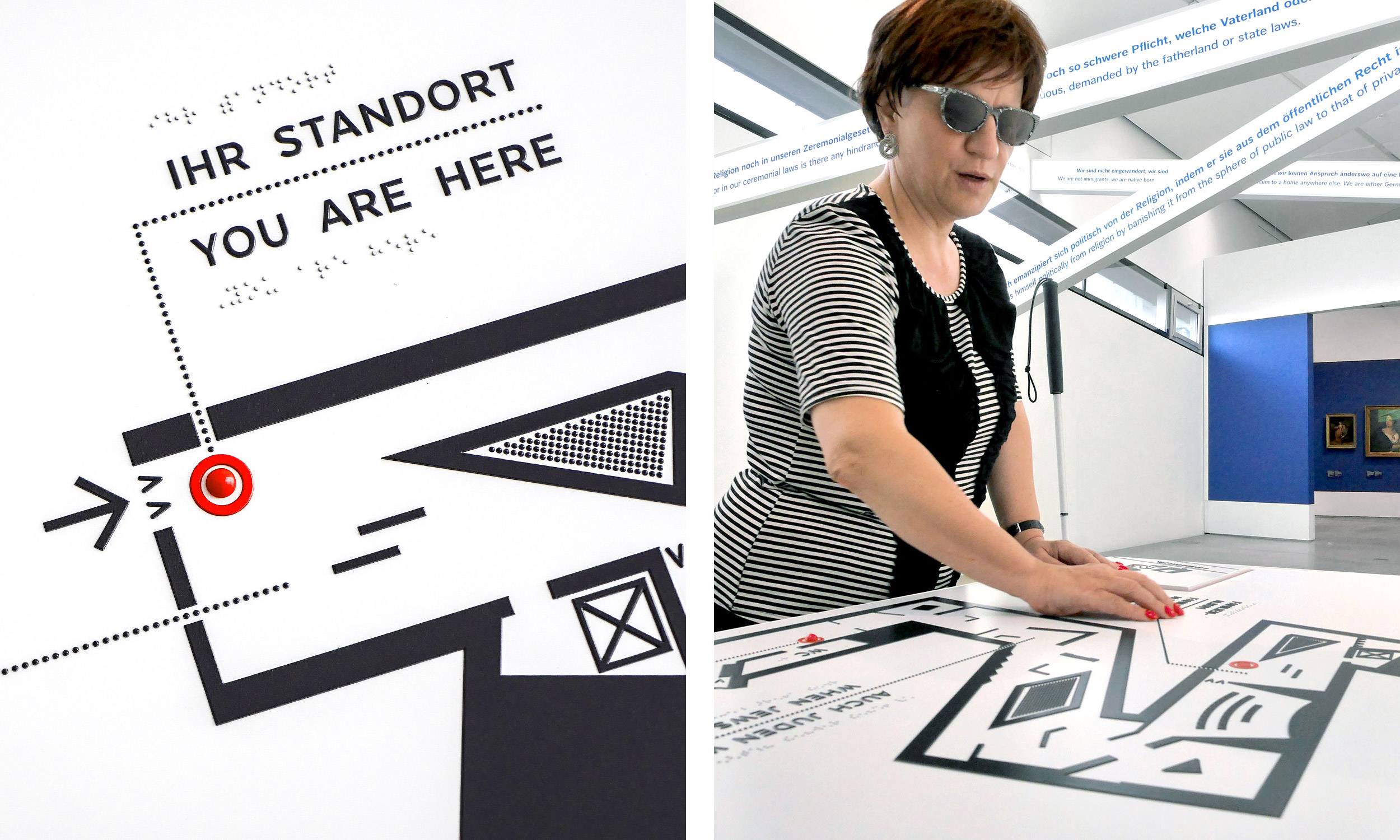
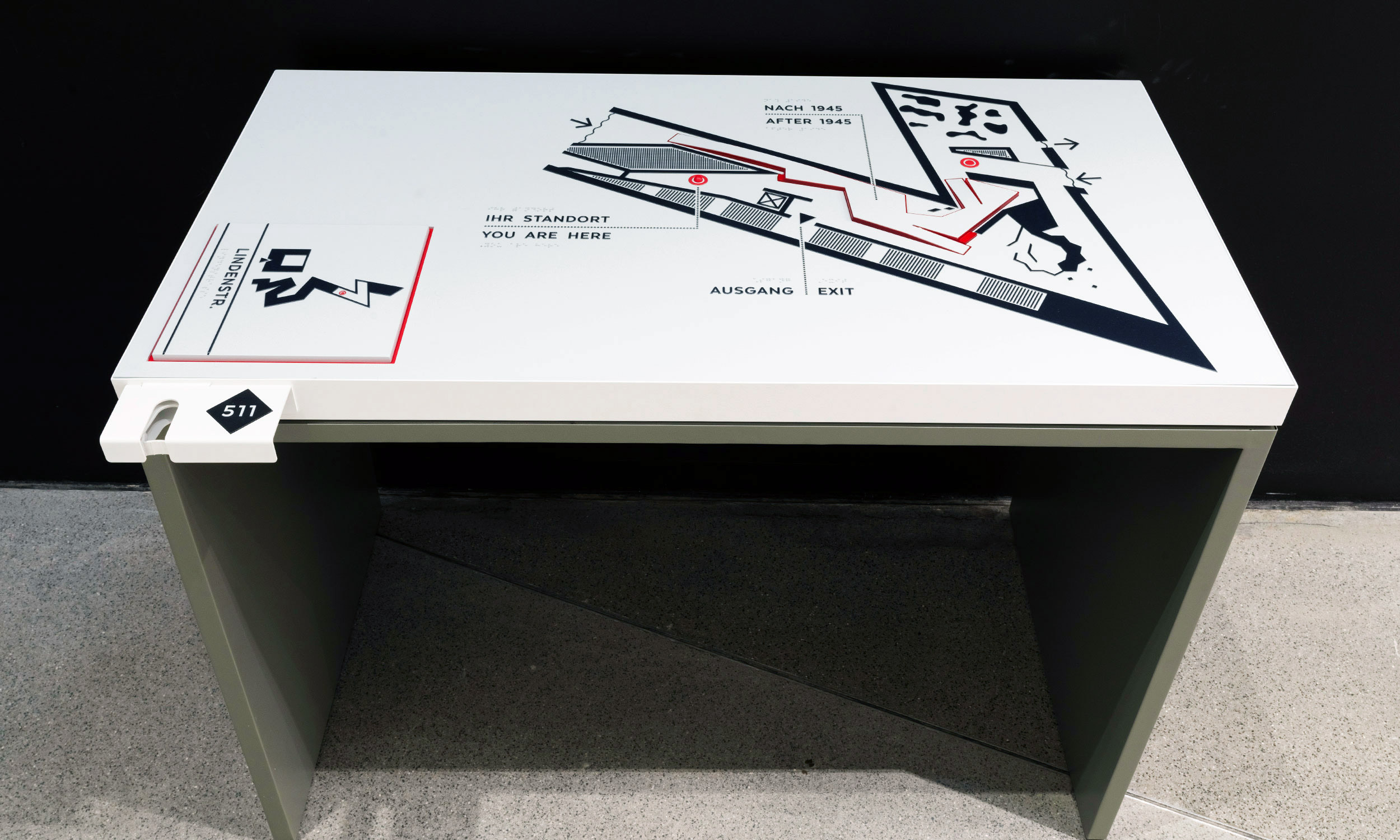
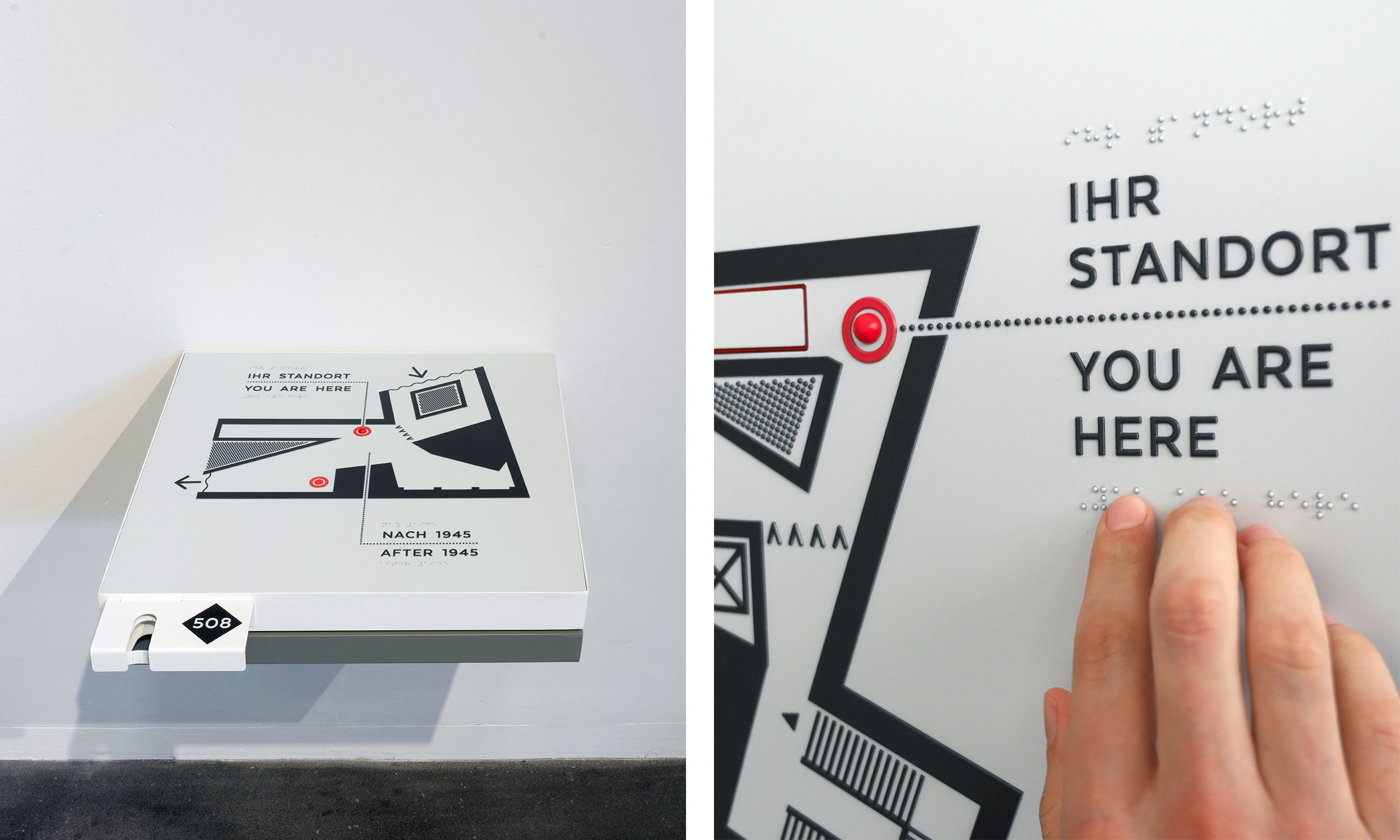
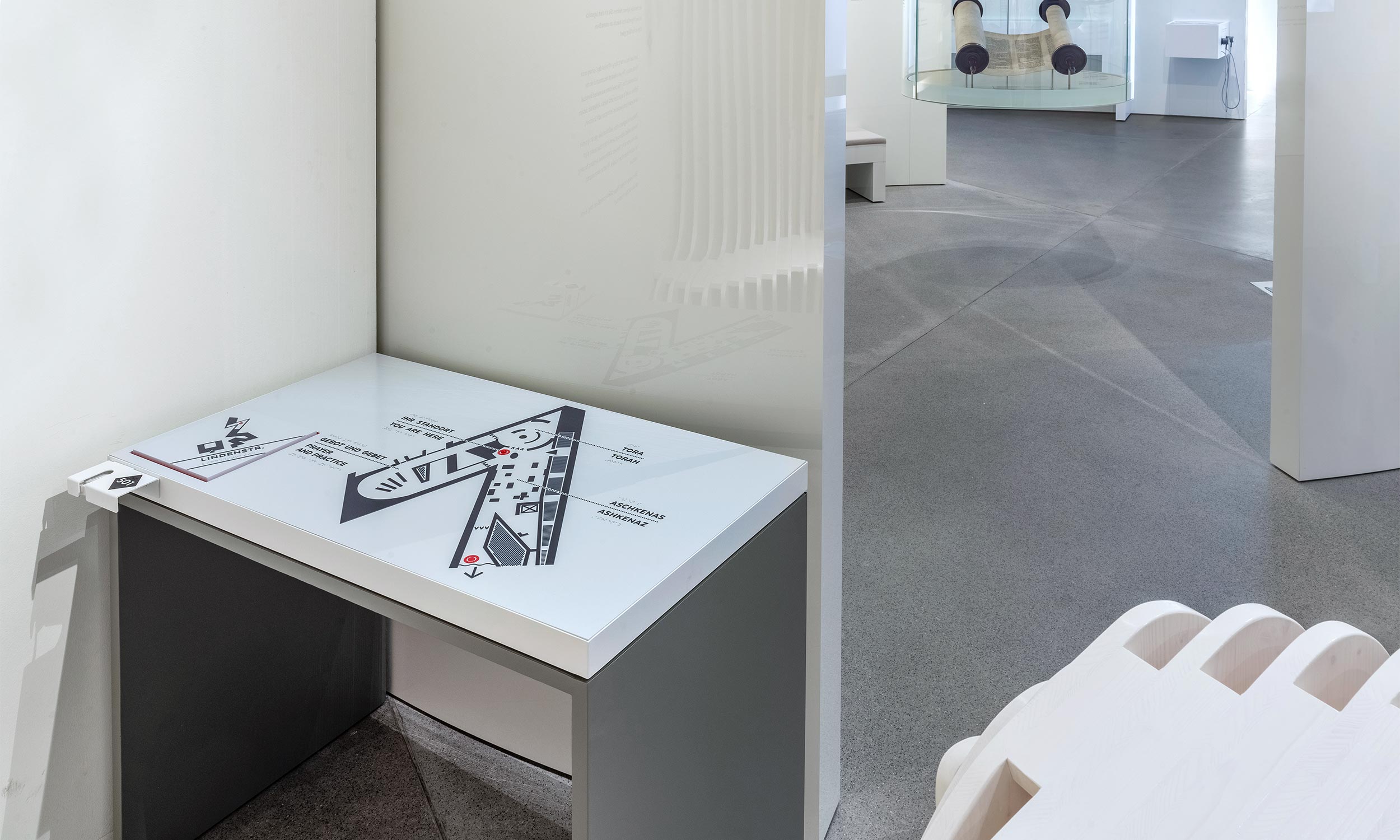
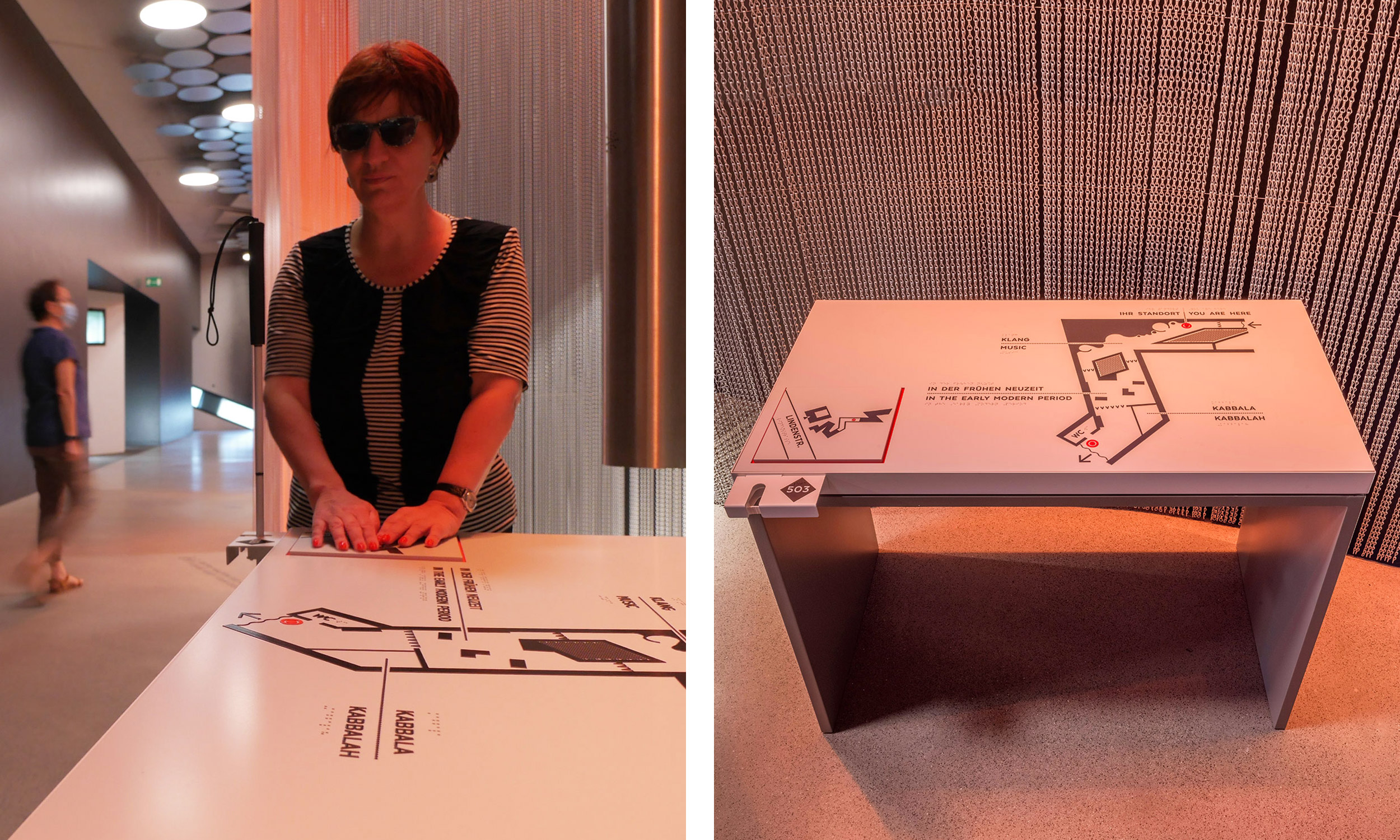
Inklusion in Detail
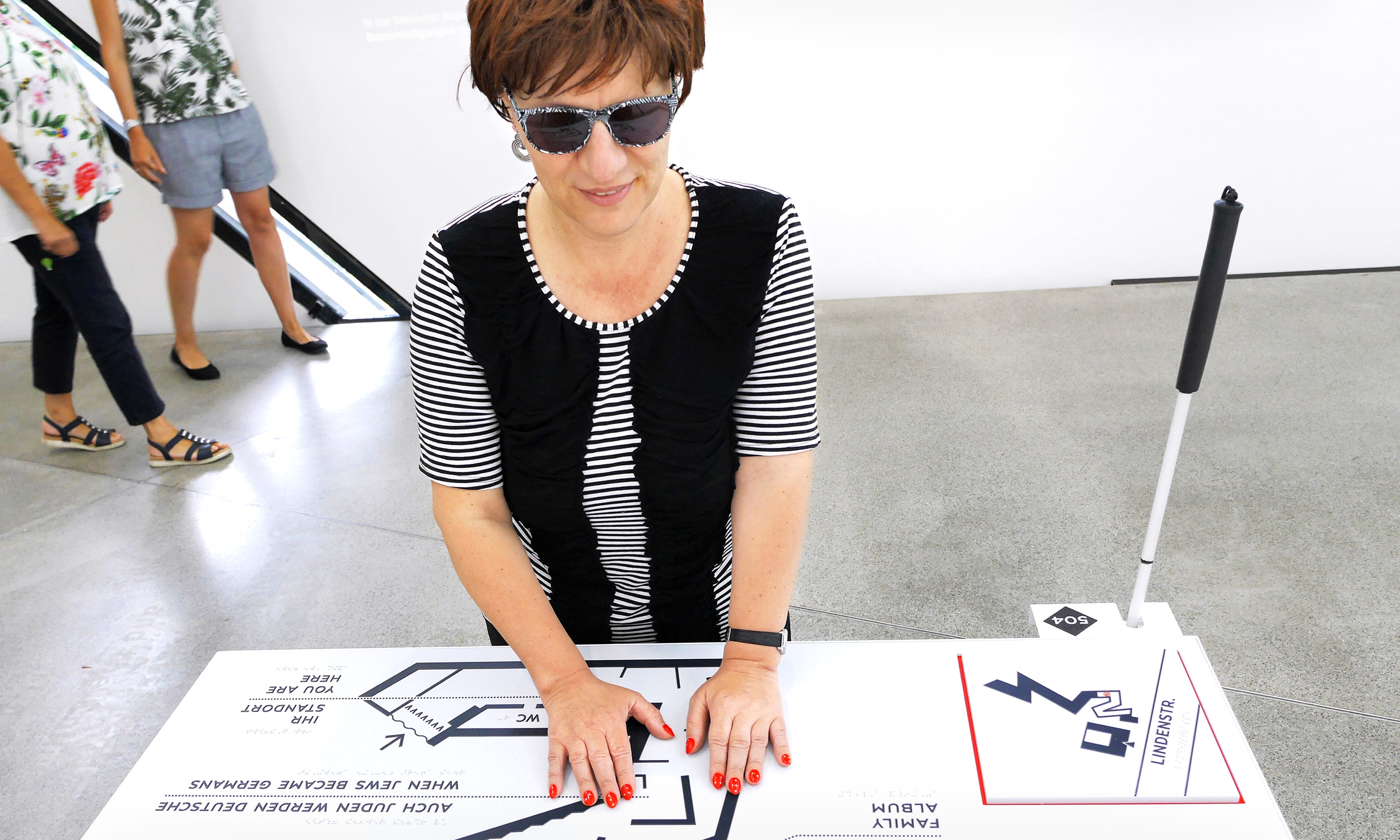
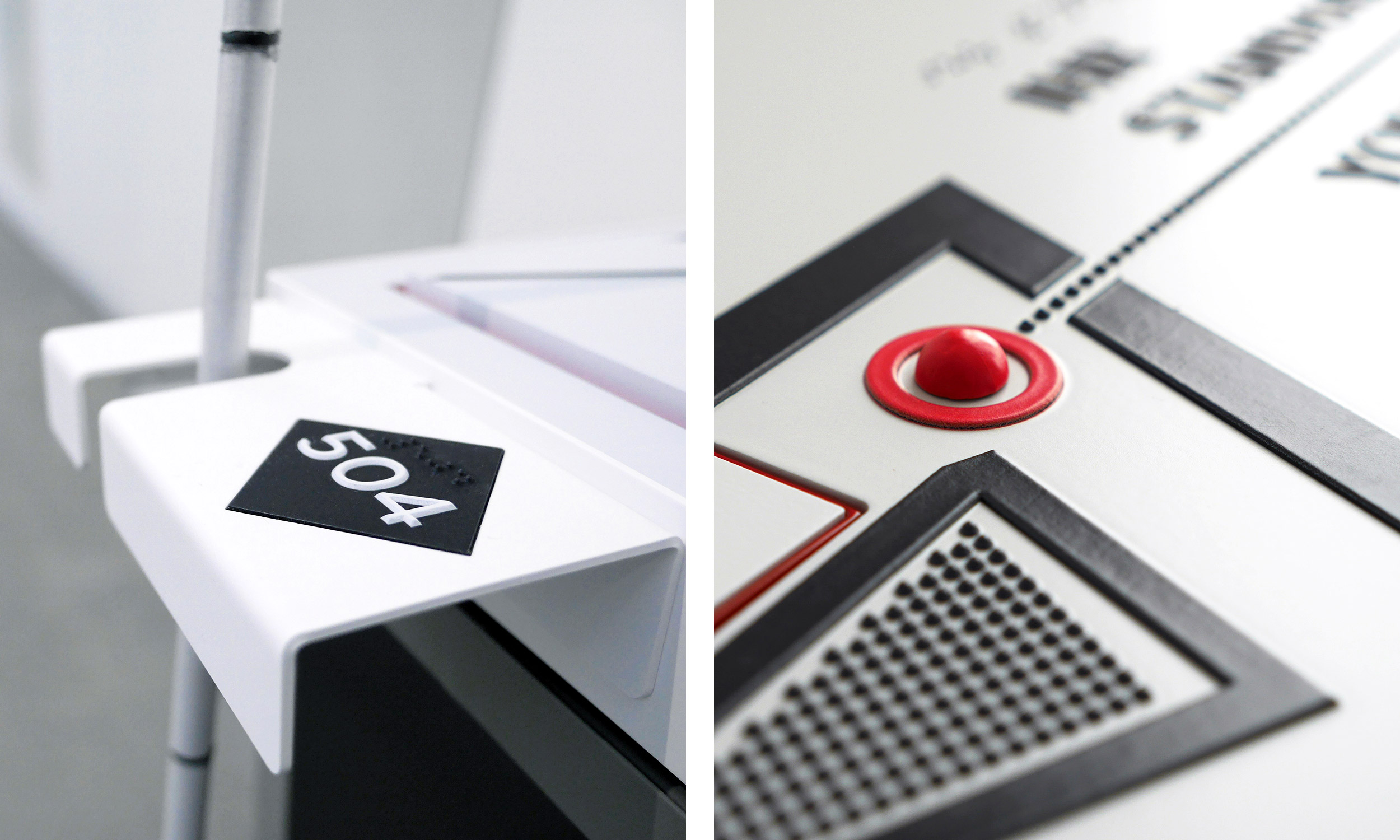
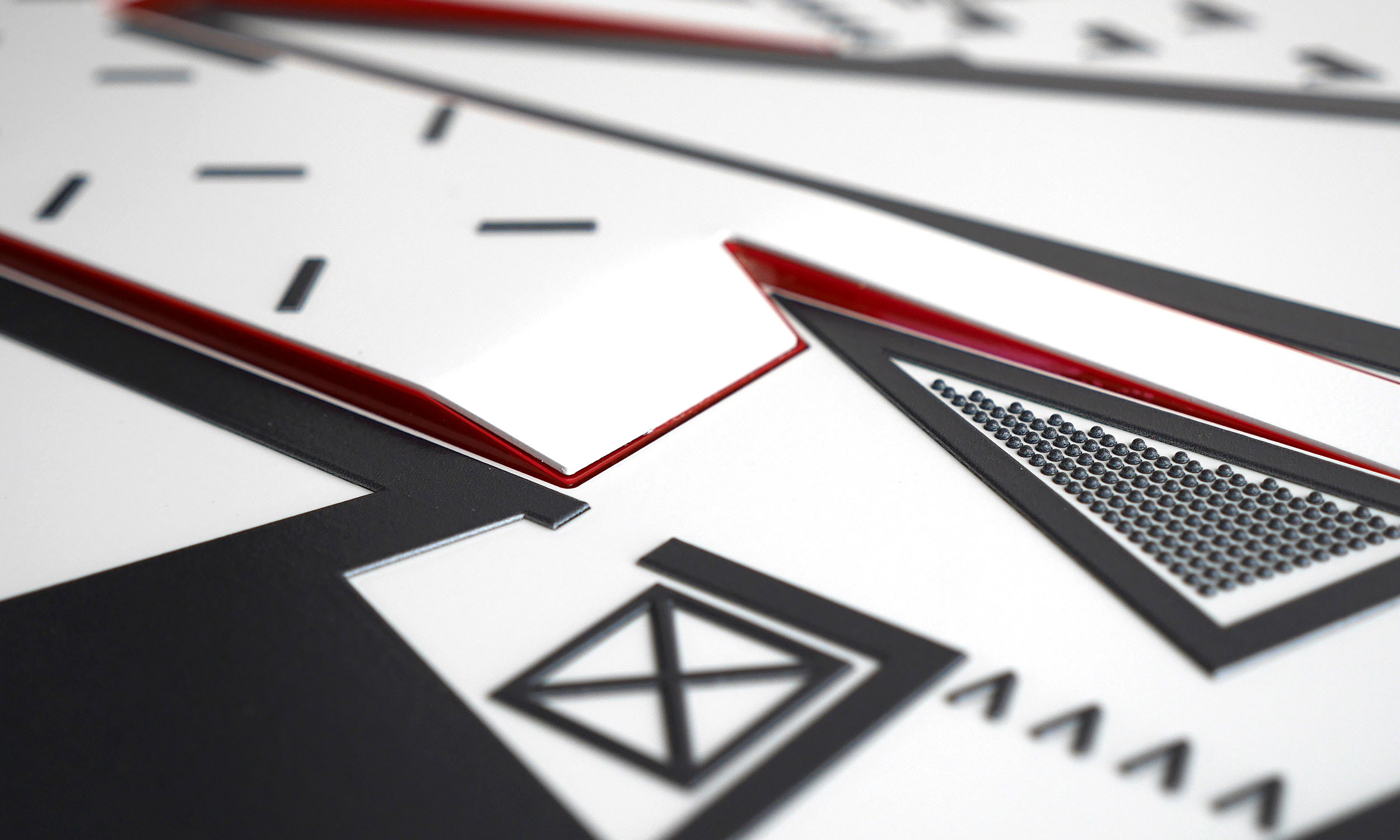

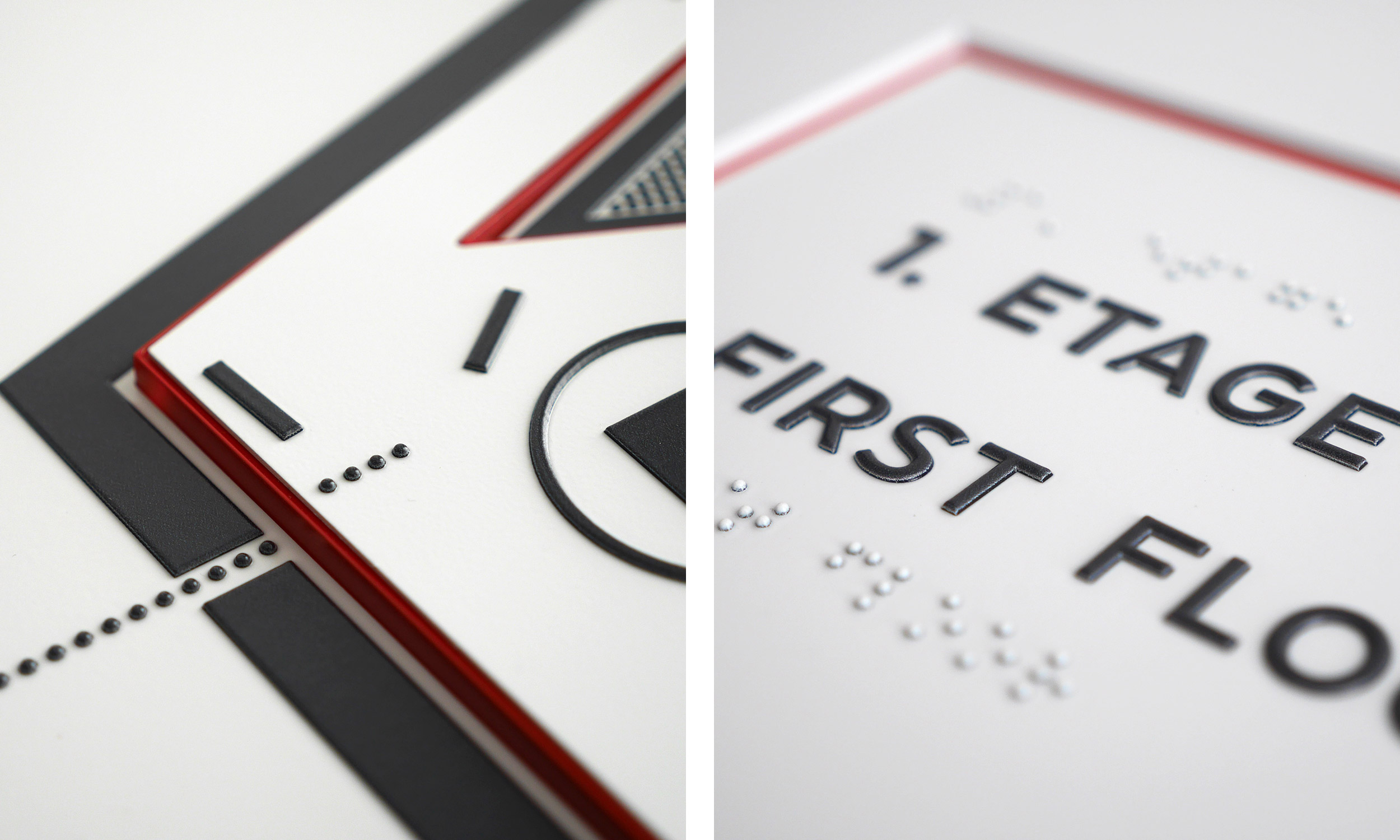
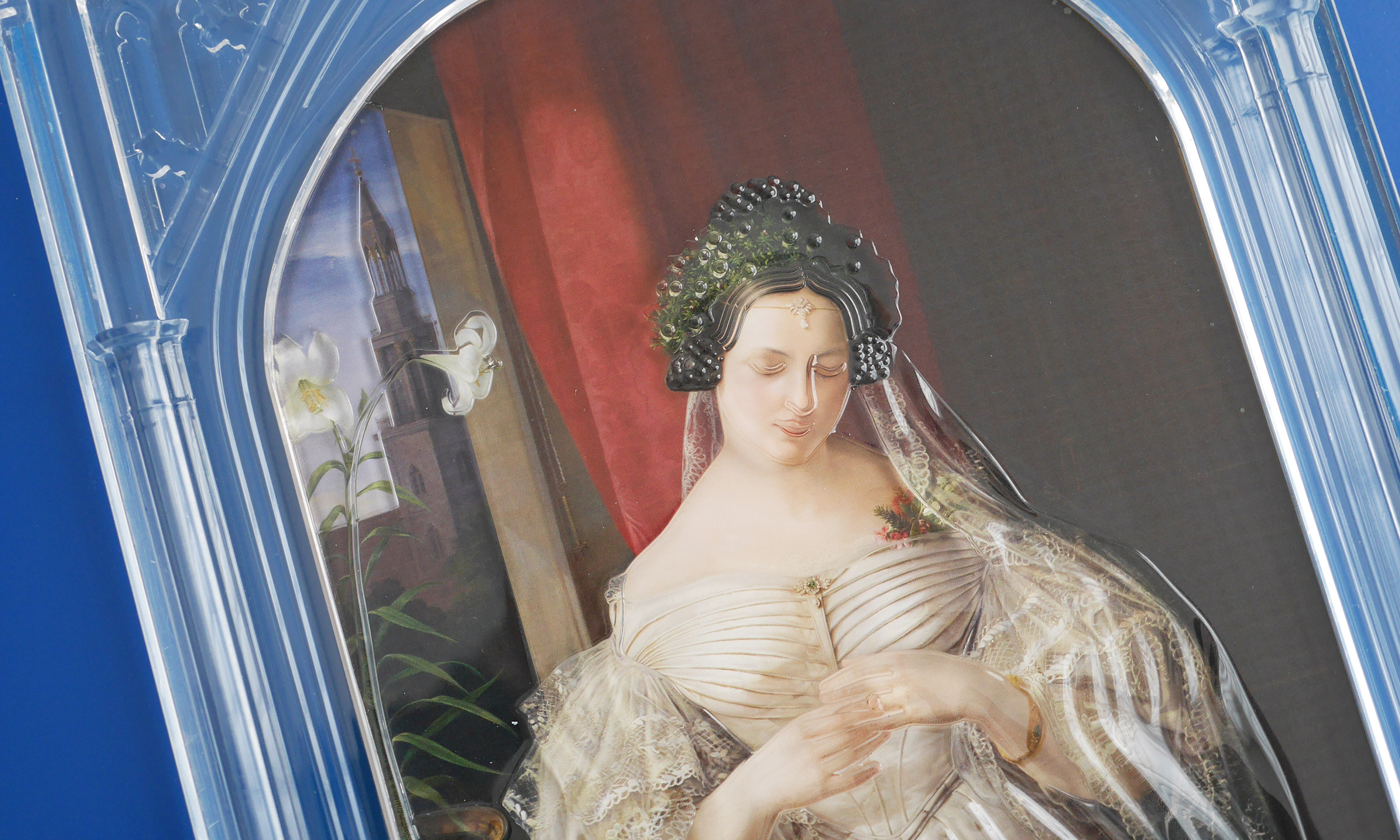

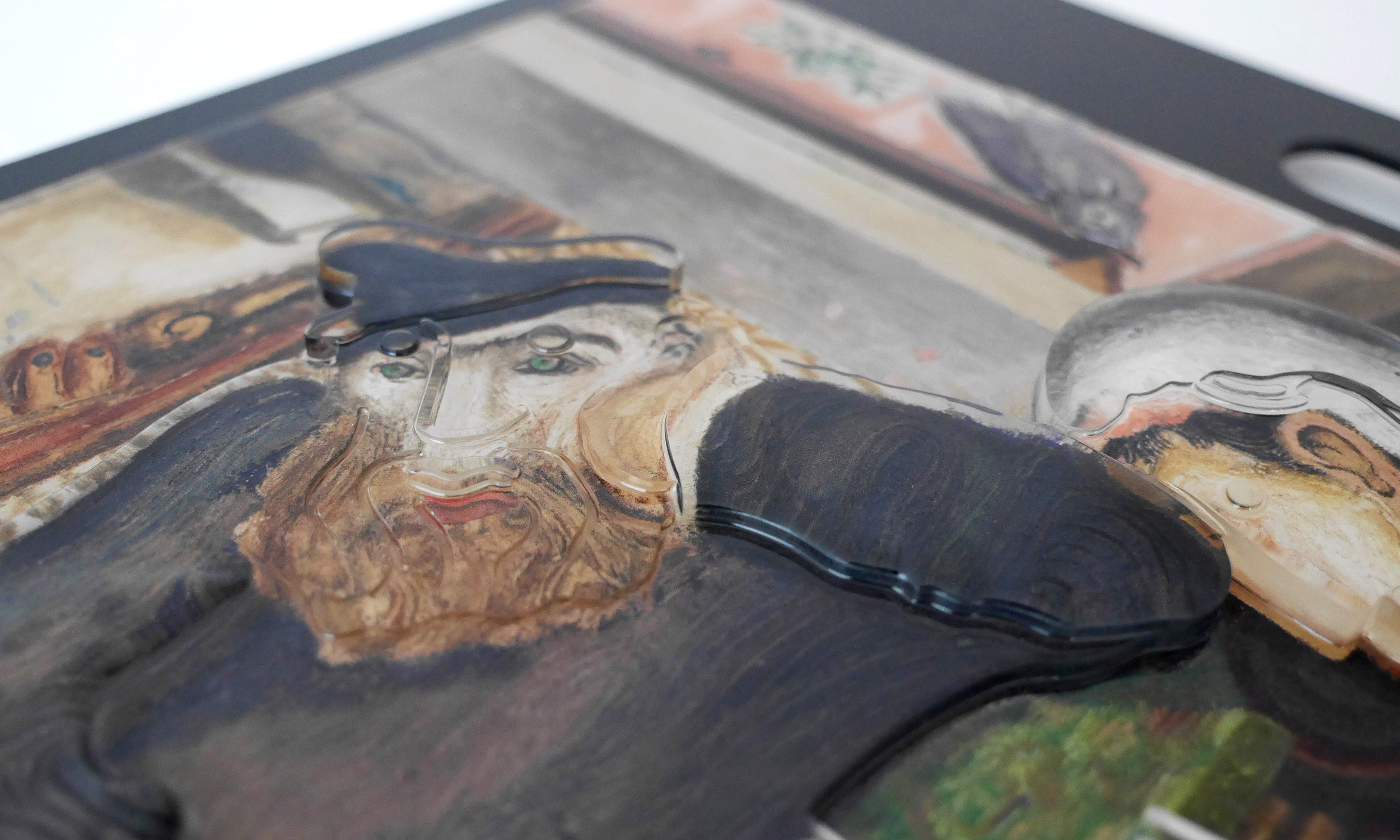
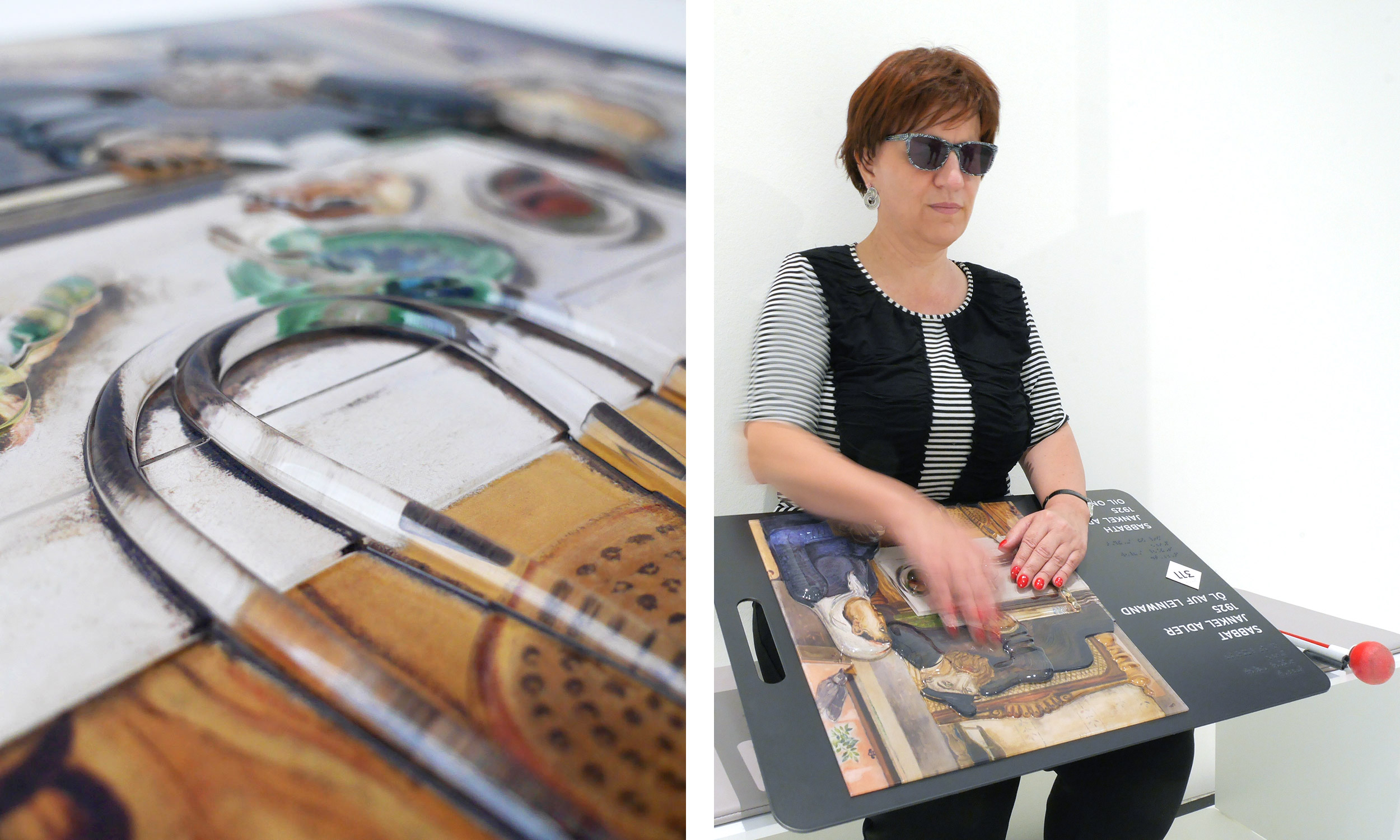
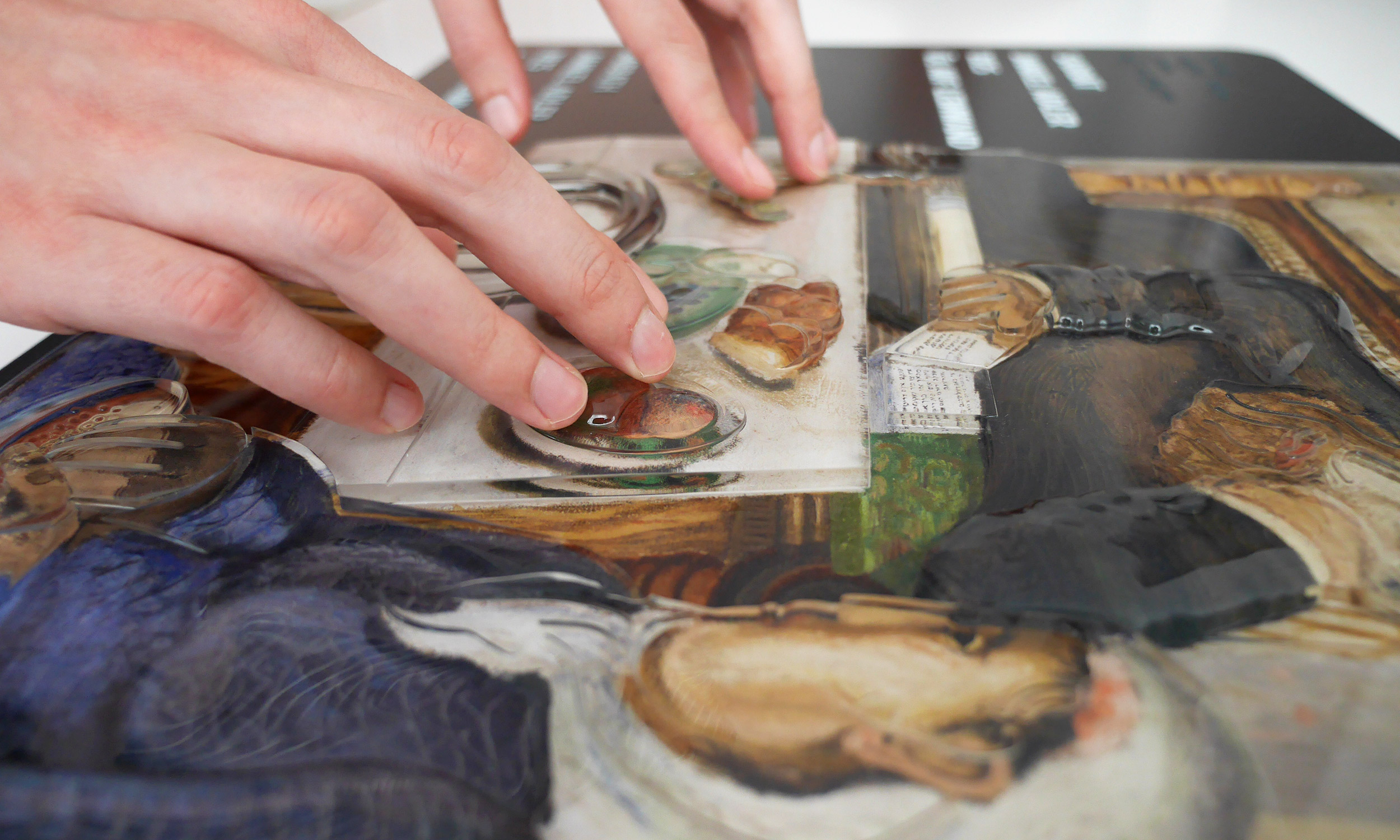
Project Details
- Client: Jewish Museum Berlin
- Project Period: 2018 – 2020
- Project partners: Allgemeiner Blinden- und Sehbehindertenverein Berlin e.V.
Project Scope: Didactic concept for the implementation of the mediation goals for blind and visually challenged people, organization and implementation of focus group work, planning and implementation of the tactile displays including product design and 3D data creation, graphic design, production supervision and monitoring.

